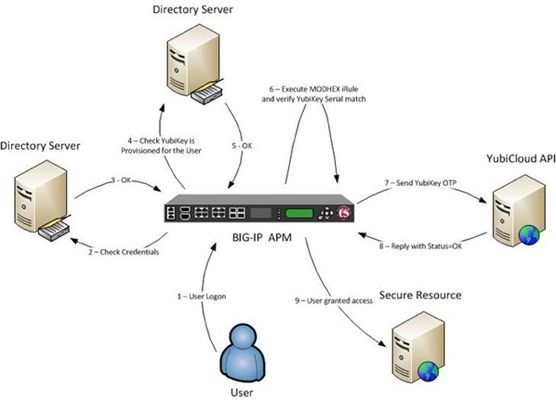google authenticator
2 TopicsRadius Proxy with Google Authenticator
During Programmability Month, we released a Getting Started with iRules LX series of introductory articles, covering concepts, workflows, troubleshooting techniques, and best practices. This last week, one our community members, Artiom, took to Youtube to start sharing his newfound love of the new iRules LX functionality. He starts his video series with an overview of a solution to support a radius call and translate to an ldap back-end query, shown below. After the intro video, he goes back to square one to start cover setup and then in the last current video in the series, covers the traditional iRules portion of this solution. The Youtube series is embedded here, so as Artiom adds more videos to the series, they'll be automatically added here as well. Way to go, Artiom, looking forward to watching the rest of the series!456Views0likes1CommentStrong Authentication
It’s authentication, people! Only, wait for it….STRONGER (yes i did use the strong html tag for that.) Strong authentication is a nebulous term. Many will interchange strong authentication with two-factor authentication (2FA), but that is only one method for strong authentication, not necessarily a requirement. You could have a series of “something you know” challenges that makes the authentication process more in depth and thus stronger, but doesn’t require one or more of the other multi-factor pillars in “something you have” or “something you are." So what strong authentication solutions does F5 support? The Access Policy Manager actually shines here, because it is vendor agnostic. You can plug and play a myriad of authentication systems into the process and off you go. Some of the different authentication methods include: LDAP/S HTTP/S RADIUS TACACS+ If your authentication services can talk one or more of these protocols, APM will support it. We’ve posted solutions on DevCentral with Google Authenticator (LTM via ldap and APM,) Yubico Yubikey (LTM and APM,) as well as RSA SecurID over the years. There are some nuanced differences between all the solutions, but this diagram from Brett Smith’s APM and Yubikey article linked previously shows the general process for APM’s support of multi-factor authentication. This directory server could be Active Directory, LDAP, or RADIUS to a cloud service like Thales' (née SafeNet’s) Authentication Services as discussed in this solution brief. Beyond just authenticating local services, these strong authentication services can be utilized with federation as well, using APM’s SAML support for SP and iDP deployments. Thales (née SafeNet) has quality write-ups for their APM-integrated enterprise and cloud iDP strong authentication services available on their site. For more information about how these authentication services plug in to the larger SAML federation services, take a look at John’s lightboard Lesson on the topic. Additional Resources APM Authentication and Single Sign-On Agility 2015 APM 101 Supporting Infrastructure Lab Documents Thales Authentication918Views0likes0Comments

